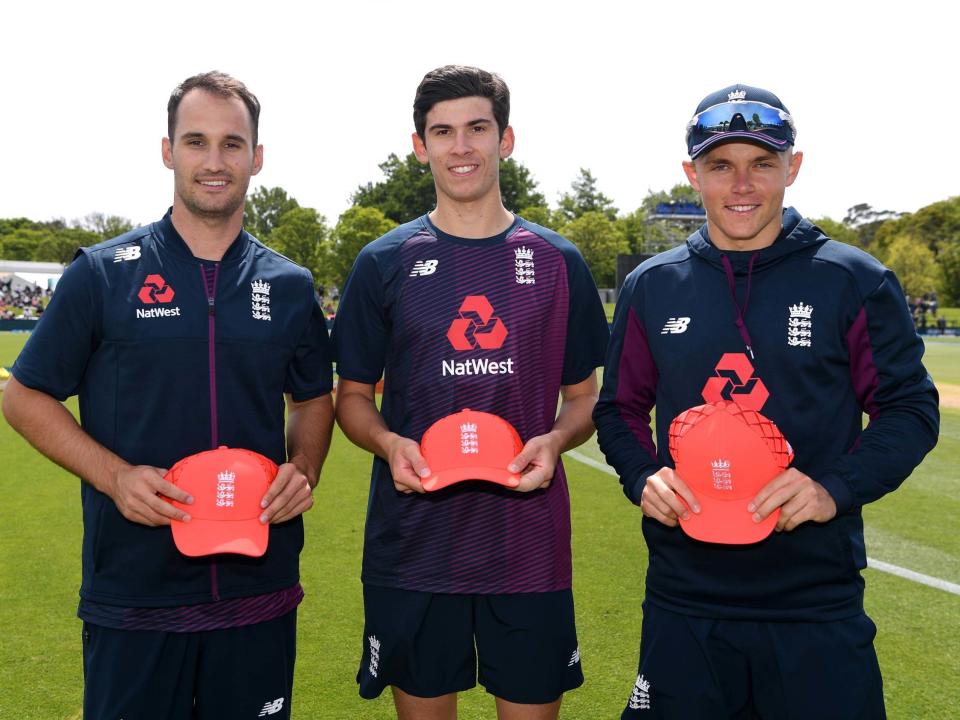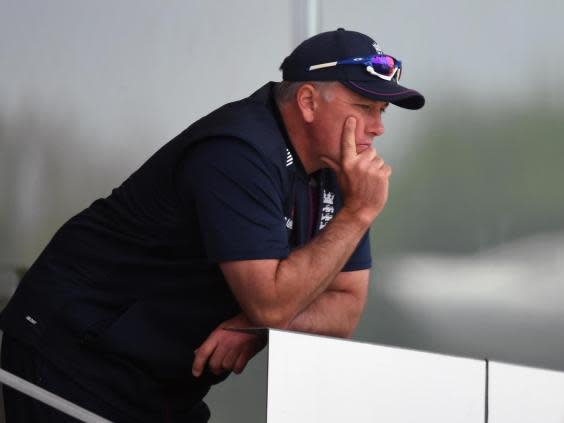In the age of cricket’s data revolution, it’s never been easier to be found out

You might not have noticed with it taking place in the dead of night, but England got off to a winning start under new head coach Chris Silverwood.
A 3-2 win in the Twenty20 series against New Zealand was secured with a Super Over which is now how all matters, sporting and diplomatic, will be settled between the two nations. Yet unlike the World Cup final in July, it all felt a bit anti-climactic. The first four matches were one-sided, and even the Super Over was 17/0 plays 8/1.
Of course, Eoin Morgan and the management team will have garnered more from it than English fans did at home. With a number of players rested after a taxing summer, new and older faces had a chance to stake their claim. Chris Jordan and Dawid Malan in particular impressed.
But it was an unfulfilling tour for the five international debutants. At a time when established county cricket fans are rallying behind “their own” with the Hundred coming into full view, there was a tangible sense of disappointment that these poster boys of the T20 Blast were unable to make their mark.
Despite starting all five matches, Somerset all-rounder Lewis Gregory faced just 19 balls, bowled only four overs and picked up a couple of “thanks for coming” awards. His county teammate Tom Banton showed flashes of his brilliance with 54 runs scored at a strike rate of 164.70 and a top score of 34.
It was the three young bowlers who had the most chastening experiences, racking up the worst economy rates for the tourists. Pat Brown of Worcestershire was the only one to come in under 10 (9.84), with the Lancashire pair of leg spinner Matt Parkinson and right-arm quick Saqib Mahmood finishing on 10.16 and 11.50 respectively.
Brown has been one of the stars of the Blast, his array of variations a fine example of his nous in the format; Parkinson the best English leg-spinner after Adil Rashid; Mahmood a fine exponent of the yorker. Yet their displays lacked the verve domestic viewers are familiar with – perhaps aside from Parkinson’s four-wicket performance in the fourth T20i. Inevitably, those who did follow the series were questioning their readiness for this level. There are, however, a couple of mitigating factors for their struggles.
One is the dimensions of the grounds, such as Eden Park, the venue for the 5th T20i, which saw 292 runs scored in 22 overs of play. Scoring rates in New Zealand are usually higher, thus Kiwi batsmen and bowlers are judged accordingly when being assessed for overseas competitions. But the second more intriguing development is that despite all five coming into the series without a cap to their names, New Zealand knew what to expect of them, from their field settings to their change-ups. And so, too, do the rest of the world.
The result of the data revolution within cricket means the grace period of a debutant, in which they might usually excel as an unknown quantity, has never been smaller. Perhaps the best examples of this phenomenon occur in Test cricket.
Gary Ballance, for instance, enjoyed a fine start to his England career, scoring 1,060 runs and averaged 62.35 in his first 11 Tests, with four hundreds, five fifties. But once there was enough information on him, both anecdotal and analytical, plans were formulated to counter his deep-sitting in the crease and ball-onto-bat approach to ensure he only scored 438 in his next 12, averaging 19 in this time.
Similar occurs with bowlers and the 50-over format. Sri Lankan “mystery” spinner Ajantha Mendis took 95 wickets at 20.40 in his first four years in one-day international cricket (2008 to 2011), with an economy rate of 4.29. In the next four years, he managed just 57 dismissals at 24.31 and teams were scoring off him at an increased rate of 5.75 runs an over. Spinners are supposed to improve with age yet here was one getting more expensive and less prolific.
In international Twenty20, this window is basically non-existent.
At the start of this month, India and Bangladesh competed in the 1000th T20i, a milestone that took just over 14 years to register, with 615 played since the start of 2015. Given the number of T20 leagues, franchise or otherwise, those figures are dwarfed by the amount being played domestically. For matches played in 2018 alone, cricket analytics company CricViz had access to 704 T20s in their database compared to 488 first-class fixtures, of which 48 were Tests. The scale of information accrued also differs across formats.
There are generally three tiers of data. Standard “ball-by-ball”, which is simply who scores runs off who, more detailed information on the type of shot played or ball bowled along with where it went and what the contact was like, and then there is ball tracking. The best conclusions require all three, though ball-tracking is only available for televised matches. With so much T20 broadcast, not only is there a higher concentration of relevant data on the shortest format but it is also of a higher standard.
It means models to work out how to combat players, whether batters or bowlers, are not only easier to build but more reliable. By contrast, a Test player who has played for a year might only have 10 innings worth of quality data as first-class cricket is rarely on television. According to one industry analyst contacted by The Independent, constructing a “robust” model for a player in the longest format takes up to two years.

Much of this information, certainly versions of it, are readily available to franchise and international coaches. And now more than ever, the numbers are being effectively crunched by professionals. New Zealand Cricket, for example, has enlisted the help of Qrious, a cutting-edge analytics company, to provide relevant insights on opponents to both their men’s and women’s teams.
For players, the benefits of playing in this era of ubiquitous information is that getting gigs in overseas leagues has become less about who you know and more about what you can do.
Banton will play for the Brisbane Heat in this year’s Big Bash League and he will be joined at the competition by Brown who will finally don the green of the Melbourne Stars. In 2018, Parkinson was picked up by the Stars (though could not honour his commitments after suffering a stress fracture in his back) and for the last two IPL auctions Gregory’s statistics as a finisher has piqued the interest of a handful of coaches. This despite none of them having played domestic T20 outside the Blast.
For all five, this first overseas excursion as a T20 cricketer serves as a reminder that the challenge is evolving to stay ahead of the data to ensure a fruitful career internationally, on the global treadmill or both.
It has never been more lucrative to be a cricketer and never easier to be found out.
Read more
Morgan hails England’s latest Super Over heroics against New Zealand

 Yahoo Sport
Yahoo Sport 





































